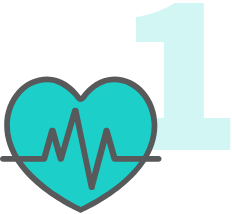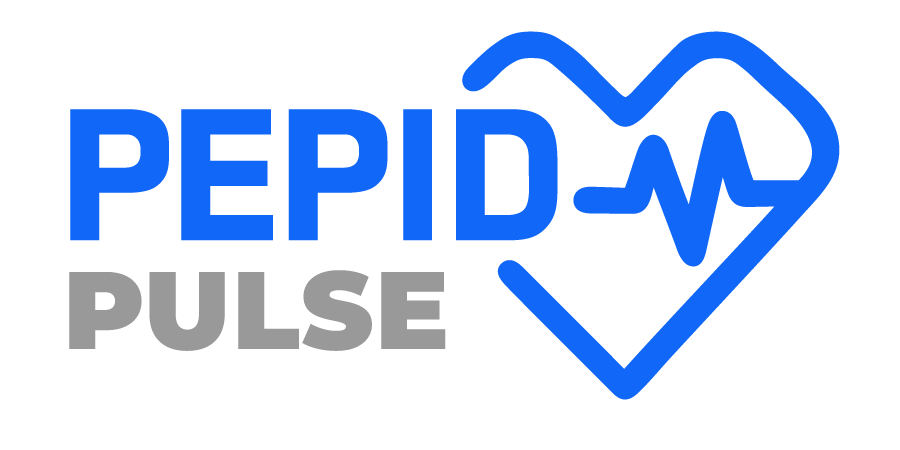Moving Forward with New Provisions
The Substance Use-Disorder Prevention that Promotes Opioid Recovery and Treatment (SUPPORT) for Patients and Communities Act (H.R. 6), signed on October 24, 2018, addresses the opioid crisis by reducing supply and access while expanding preventive, curative and rehabilitative services. However, the lack of provisions for Medicare Part B coverage of opioid-related services leaves many pharmacists still feeling underutilized in a nationwide public health crisis.
SUPPORT Act provisions that directly affect pharmacists:1
Medicare
- Required electronic prescribing for Medicare Advantage and Part D schedule II-IV controlled substances
- Standardized electronic authorization requests and responses across Part D plan sponsors and Medicare Advantage organizations
- Mandated “Lock-In” Programs for at-risk beneficiaries to prevent them from obtaining excessive quantities of prescribed drugs through multiple physicians and pharmacies
- Qualify at-risk beneficiaries for medication therapy management (MTM) under Medicare Part D
- MTM under Medicare to address cost-effective controlled-substance disposal methods
- Expand telehealth option for substance abuse treatments
Medicaid per State
- CMS to issue guidelines on federal reimbursement using telehealth including assessment, medication-assisted treatment, counseling, medication management, and medication adherence.
- Mandates Prescription Drug Monitoring Program (PDMP) check before prescribing schedule II substances
- Encourages the creation of qualified PDMPs that meet reporting requirements on timeliness, content, and workflow integration
- Drug review and safety edits for subsequent opioid refills and maximum morphine equivalent, and an automatic claims-review that monitors concurrent opioid and benzodiazepine or antipsychotic prescriptions
Supply Chain
- Grant Funding for safe drug disposal programs
- Allow access to pharmacies’ controlled-substance orders for drug manufacturers and wholesale distributors
- Clarifies the term “suspicious order” and adds detection and reporting requirements
Education and evidence-based resources
- Department of Health and Human Services (HHS) to create educational materials on pharmacists’ right to decline prescription fills
- Revise payment options for non-opioid treatments for acute and chronic pain that are multidisciplinary and evidence-based
FDA
- Develop evidence-based guidelines for prescribing opioids specifically indicated for acute pain
- FDA to gain expanded Risk Evaluation and Mitigation Strategy (REMS) authority to require enhanced safety packaging and disposal
Moving Forward with a 5-Point Plan
In 2017, the HHS developed a comprehensive 5-step plan to empower local communities to counter the nation’s opioid crisis by strengthening the following:2
 Access to better prevention, treatment, and recovery services
Access to better prevention, treatment, and recovery services
$800 million worth of grants went to opioid-related specialized services, allowing states to receive Medicaid coverage for treatment programs.
 Epidemic data supply
Epidemic data supply
By supporting timely and specific public health data gathering and reporting, including the CDC’s report on drug overdoses.
 Pain management
Pain management
Apply evidence-based analgesia from acute to chronic pain, and in any stage of the care continuum.
 Funding and availability of overdose-reversing drugs
Funding and availability of overdose-reversing drugs
President Trump’s 2019 Budget has allotted $74 million towards this goal, following a strong US Surgeon General Advisory on Naloxone and Opioid Overdose.4
 Research and Development
Research and Development
The National Institutes of Health (NIH), an HHS agency, launched a trans-agency campaign called the HEAL (Helping to End Addiction Long-Term) Initiative. To date, agencies such as the National Institutes for Drug Abuse (NIDA), and Agency for Healthcare Research and Quality (AHRQ) have joined and launched their own R&D contributions.
Although H.R. 6 acknowledges pharmacists’ achievements and expanding roles in countering the opioid crisis, there remains room for improving the specifics and pitfalls of prescription drug coverage under Medicare Part B, which covers a limited number of outpatient prescription drugs under limited conditions. These typically include drugs exclusively dispensed from a doctor’s office or outpatient hospital visit.
Healthcare stakeholders are quickly realizing that the industry’s sustainability and efficacy rest on public health. Pharmacists are best positioned to launch more aggressive drug monitoring and reporting because they work hand-in-hand with the people in their own communities. Backed with the right policies and technology, pharmacists can serve as gateways for population health data exchange, and respite for patients struggling to move forward from a highly stigmatized disease.
[elfsight_social_share_buttons id=”3″]
>> Join the Movement at ASHP Midyear 2018
December 3-5, 2018
Booth #513
Resources:
- Balik, Rachel. “Broad Opioid Legislation Is Ready for President’s Signature.” APhA, https://www.pharmacist.com/article/broad-opioid-legislation-ready-presidents-signature?is_sso_called=1.
- Digital Communications Division. “5-Point Strategy To Combat the Opioid Crisis.” gov, https://www.hhs.gov/opioids/about-the-epidemic/hhs-response/index.html.
- National Institute on Drug Abuse. (2018, March 06). Opioid Overdose Crisis. Retrieved from https://www.drugabuse.gov/drugs-abuse/opioids/opioid-overdose-crisis
- “Remarks by President Trump at Signing of S. 2553, Know the Lowest Price Act, and S. 2554, Patient Right to Know Drug Price Act.” The White House, The United States Government, https://www.whitehouse.gov/briefings-statements/remarks-president-trump-signing-s-2553-know-lowest-price-act-s-2554-patient-right-know-drug-price-act/.



Trackbacks/Pingbacks